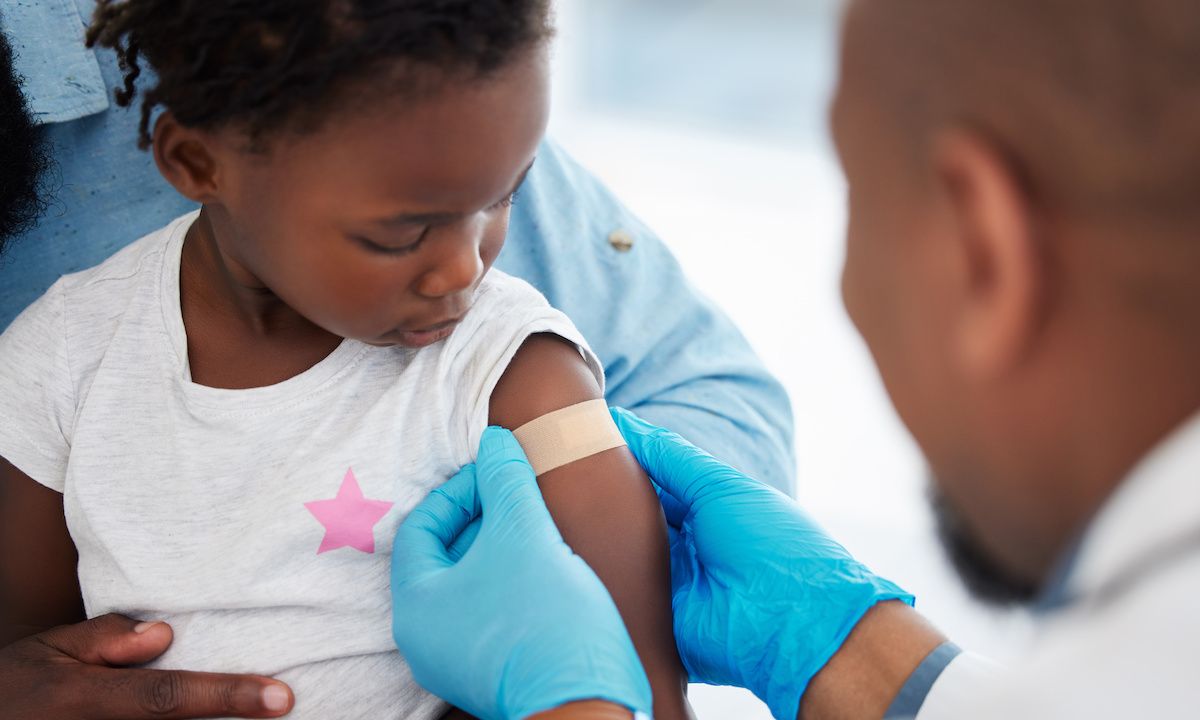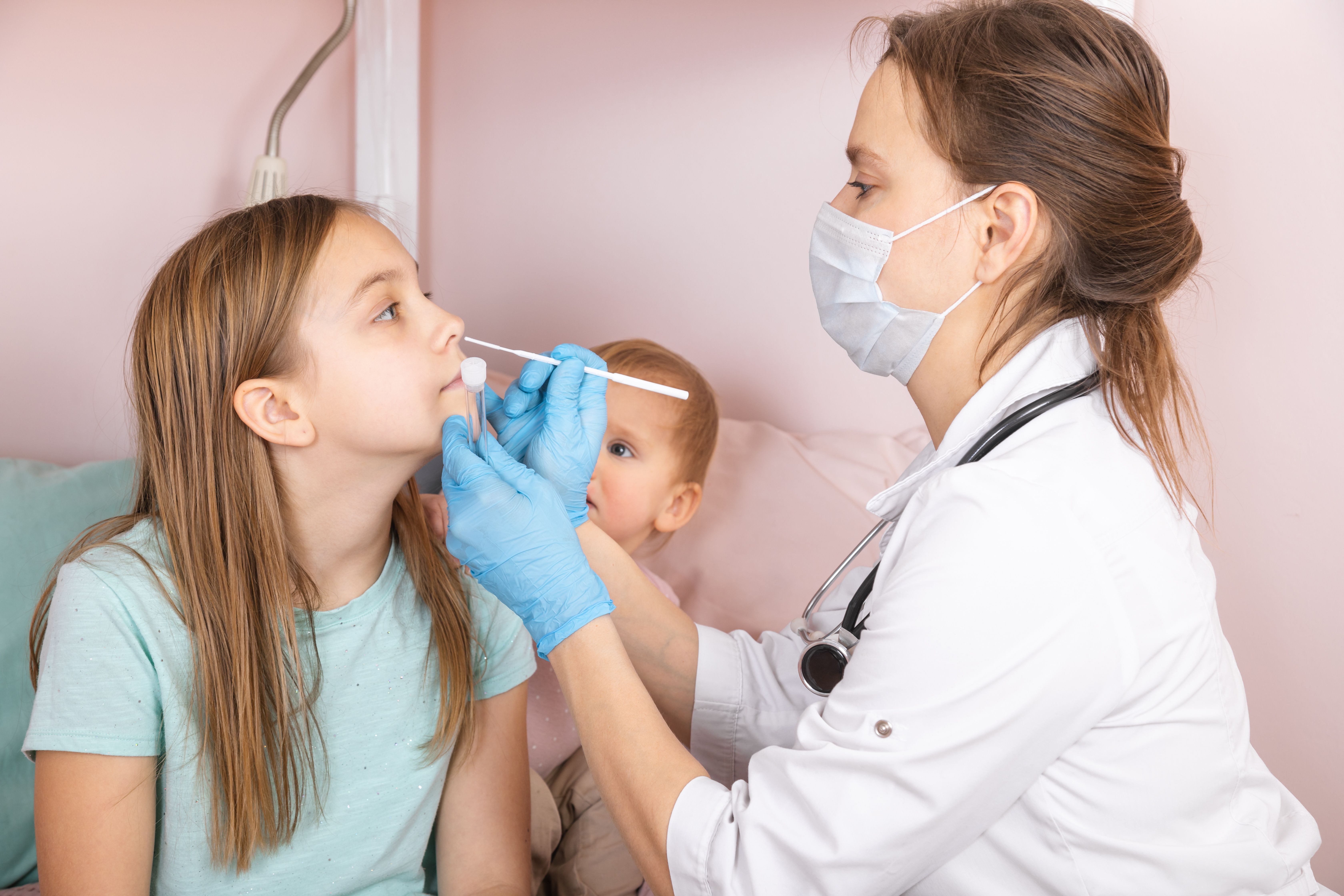News
Article
Falling Vaccine Coverage Threatens a Surge in Preventable Diseases
Author(s):
Key Takeaways
- Declining vaccination rates could lead to millions of preventable infections, with measles likely becoming endemic first.
- The simulation model predicts significant increases in measles, rubella, poliomyelitis, and diphtheria cases if current trends continue.
Millions of cases of preventable infections are likely to occur over the next 25 years if child vaccination rates continue to decline, according to new research published in JAMA.1
The rate of kindergartners with complete records for vaccines for measles, polio, whooping cough, and chickenpox has fallen slightly since the COVID-19 pandemic. However, this small decrease is creating new pockets across the nation of students who are no longer protected by herd immunity. | Image credit: Nina Lawrenson/peopleimages.com - stock.adobe.com

The study utilized a simulation model to estimate the number of cases of infectious diseases that are becoming more common since vaccination rates started declining during the COVID-19 pandemic.2 According to the CDC, there are several reasons for this decline beyond stay-at-home orders associated with the pandemic and growing hesitancy around newer mRNA vaccines, including decreases in coverage for most of the Advisory Committee on Immunization Practices–recommended vaccinations for children, which the agency predicted could lead to a resurgence of vaccine-preventable diseases, including measles, varicella, rotavirus, and others.3
According to The New York Times, the rate of kindergartners with complete records for vaccines for measles, polio, whooping cough, and chickenpox has fallen slightly since the pandemic: from 95% before the pandemic to under 93% after it ended.4 However, this small decrease is creating new pockets across the nation of students who are no longer protected by herd immunity. Some states have seen greater drops, with Alaska, Florida, Idaho, Minnesota, Montana, South Dakota, and Wisconsin seeing at least 10% drops in vaccination rates among kindergarteners from 2023 to 2024.
The US is starting to see the effects of this decline, with a rise in measles cases during the first few months of 2025.4 With the appointment of Robert F. Kennedy, Jr., a long-time vaccine denier, as HHS secretary, concerns are being raised about whether the rise in preventable diseases will continue to slow down, grow, or, worse, accelerate.
The authors echoed this concern, as childhood vaccine guidelines are being discussed more. “Recently, more abrupt changes to the childhood vaccine schedule have been debated, including removal of certain vaccines entirely. Even though a high level of population immunity remains due to decades of vaccination and, historically, infection-acquired immunity, declines in routine vaccinations will increase the number of susceptible persons over time and may lead to [a] resurgence of many infectious diseases.”
The state-level, individual-based simulation model used in the present study was designed specifically to predict the number of measles, rubella, poliomyelitis, and diphtheria cases under different vaccination decline scenarios in the US.
Each individual in the simulated population was assigned an age, state, and immunity status based on vaccine history or prior infection. States were modeled independently, with no cross-border transmission. Immunity assumptions varied by pathogen: measles and rubella vaccines were modeled with all-or-nothing protection, while poliovirus and diphtheria vaccines primarily reduced disease severity and transmission.
Simulations were run under multiple vaccination scenarios (from full cessation to increased coverage) over 25 years, reporting cumulative infection and complication counts across 2000 runs. Sensitivity analyses varied key parameters like reproduction numbers and immunity levels to test robustness. The model's accuracy was validated by comparing simulated outcomes to CDC-reported cases. No human subjects were involved, and all data and code are publicly available.
At baseline in 2024, childhood vaccine coverage across US states showed modest variation: 88% to 96% for measles-mumps-rubella (MMR), 78% to 91% for diphtheria-tetanus-pertussis, and 90% to 97% for inactivated poliovirus. Corresponding baseline immunity in children aged 3 to 4 years ranged from 85% to 93% for measles and rubella, 78% to 91% for diphtheria, and 90% to 97% for poliovirus.
The model, validated against historical case estimates, predicted 2550 deaths and 170,200 hospitalizations under current vaccine rates over 25 years, which, broken down by infection, separates out to:
- 851,300 measles cases
- 190 rubella cases
- 18 poliomyelitis cases
- 8 diphtheria cases
A 5% to 10% increase in MMR coverage significantly would reduce measles cases to 5800 and 2700, respectively. In contrast, a 10% drop would lead to 11.1 million measles cases. A 25% vaccine coverage decline could yield further decreases: 26.9 million measles cases; nearly 88,000 polio cases; and 80,600 deaths. Cases would further reduce with a 50% increase in vaccination rates, lowering case numbers to 51.2 million for measles, 9.9 million for rubella, and 4.3 million for polio, as well as 159,200 deaths.
Conversely, vaccination decline continuations would pose significant risks to children. If rates continue to decrease, the model predicted that measles would be the first of the 4 diseases studied to see large outbreaks and return to endemicity—within 21 years under current rates, but not under a 5% vaccine increase. At a 25% vaccine decline, poliovirus became endemic in 11% of simulations, while at a 50% decline, rubella, measles, and poliovirus returned to endemicity at varying speeds.
State-level susceptibility varied, with Texas having the highest measles risk. Sensitivity analyses confirmed that pathogen transmissibility and importation rate were major factors influencing outcomes, especially for rare diseases like polio and diphtheria, where results showed greater uncertainty. Overall, maintaining or increasing vaccine coverage markedly reduced disease burden and delayed or prevented the return to endemic transmission.
This study's main limitations included the use of a simplified modeling structure and assumptions, lack of within-state heterogeneity and interstate transmission rates, reliance on uncertain input estimates and importation rates, exclusion of reactive vaccination and behavior changes, and limited representation of complex vaccine effects, social mixing, and long-term predictive accuracy.
The authors concluded, “The timing and critical threshold for returning to endemicity will differ substantially by disease, with measles likely to be the first to return to endemic levels and may occur even under current vaccination levels without improved vaccine coverage and public health response. These findings support the need to continue routine childhood vaccination at high coverage to prevent resurgence of vaccine-preventable infectious diseases in the US.”
References
1. Kiang MV, Bubar KM, Maldonado Y, et al. Modeling reemergence of vaccine-eliminated infectious diseases under declining vaccination in the US. JAMA. Published online April 24, 2025. doi:10.1001/jama.2025.6495
2. Kindergarteners’ vaccination rates continue to decline. American Academy of Family Physicians. January 19, 2023. Accessed April 24, 2025. https://www.aafp.org/news/health-of-the-public/kindergarten-vaccine-rates-2023-report.html
3. Hill HA, Yankey D, Elam-Evans LD, et al. Decline in vaccination coverage by age 24 months and vaccination inequities among children born in 2020 and 2021 — National Immunization Survey-Child, United States, 2021–2023. MMWR Morb Mortal Wkly Rep. 2024;73(38):844-853. doi:10.15585/mmwr.mm7338a3
4. Paris F. Childhood vaccination rates were falling even before the rise of R.F.K. Jr. The New York Times. January 12, 2025. Accessed April 24, 2025. https://www.nytimes.com/interactive/2025/01/13/upshot/vaccination-rates.html




